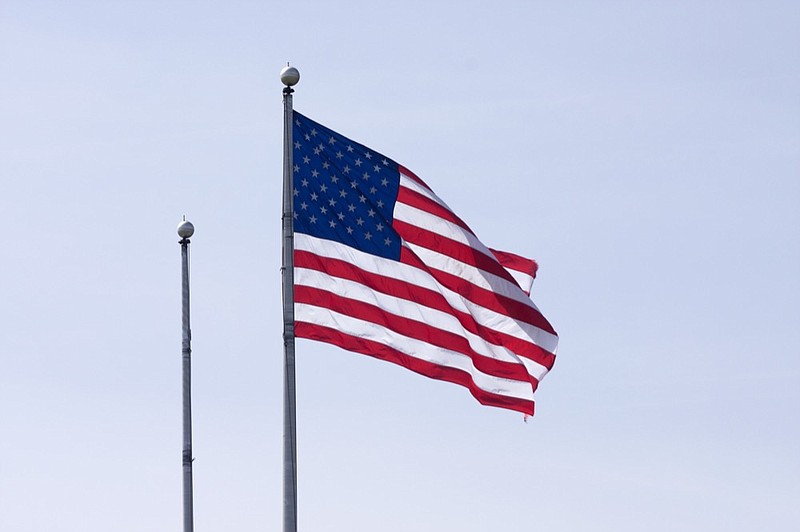The Marines rushed ashore from their amphibious tanks under withering fire. Some were veterans of earlier amphibious attacks. For others, this was their first combat experience. By nightfall they had established a narrow beachhead at a cost of almost 1,000 casualties.
The invasion by U.S. forces of Saipan in the Western Pacific Ocean on June 14, 1944, represented a major step toward victory over Japan. News of this costly offensive was overshadowed by ongoing fighting in Normandy.
Measuring 12.5 miles north to south and five miles at its widest point, the island, along with Guam, sits in the Marianas chain. Control of Saipan would afford American bombers based on the island to strike the Japanese homeland 1,200 miles away. The island would become a vital staging center for subsequent attacks on other enemy territories.
For music lovers
In a previous column, I asked for D-Day concert nominations. Here they are:› Navy Hymn: “Eternal Father Strong to Save.”› Edith Piaf’s renditions of “La Marseillaise” (French National Anthem) and “Je ne regrette rien.”› First act trio, “Soave sia Il Vento” (May the winds be gentle…) from Mozart’s “Cosi fan Tutti”.› Felix Mendelssohn’s “Overture, Fingal’s Cave” (The Hebrides Overture).
Despite days of heavy bombardment from ships and aircraft, the 2nd and 4th Marine Divisions encountered heavy resistance from well-entrenched mortar and machine gun positions. Enemy fire disabled or destroyed some landing craft before they reached shore. Tanks and artillery soon came ashore in support of the invaders.
The 27th Army Division landed during the following night and captured a vital airfield in the south of the island. All three divisions would engage in fierce fighting, as they drove northward through jungles and narrow ravines against a garrison of 30,000 Japanese soldiers.
Responding to the invasion of Saipan, a large Japanese task force sailed toward the island with the goal of destroying the Naval task force that protected the invading forces. In two days of repeated attacks, June 19-20, in action subsequently named the Battle of the Philippine Sea, American submarines and carrier-based aircraft sank three enemy aircraft carriers and downed 75% of the enemy's aircraft with minimal U.S. losses.
On July 7, as U.S. forces approached the last enemy stronghold, a suicidal charge by 3,000 Japanese soldiers, many armed only with machetes and bamboo spears, inflicted heavy casualties on two Army battalions, which they overran.
Among the many acts of heroism in repulsing the attack, those of Capt.Ben L. Salomon, a dentist assigned to a field hospital, are especially praiseworthy. When the hospital's surgeon was wounded, Salomon stepped in until a replacement could be found. Japanese soldiers overcame the hospital's defenders and entered the hospital and began attacking patients. Using a pistol and subsequently a machine gun, Salomon held off the attackers until his patients could escape through the back of the tented hospital. He died from multiple wounds in defense of his patients. When the area was reclaimed by U.S. forces, bodies of 98 enemy soldiers were found in front of his position. His posthumous award of the Medal of Honor was delayed for 58 years over controversy that medical personnel were prohibited by the Geneva Convention from using offensive weapons.
U.S. commanders proclaimed victory on July 9; although scattered units of Japanese soldiers held out until December 1945. 71,000 soldiers and Marines had landed on Saipan during the three-week battle; 3,000 were killed and 10,000 were wounded. Few of the almost 30,000 Japanese defenders survived.
The defeat led to the resignation of Japanese Prime Minister Hideki Tojo. Adm. Chuichi Nagumo, who commanded Japanese forces, killed himself just before the U.S. victory. The Japanese navy never recovered from its losses. For the first time in the war, Japanese media began to report accurately on losses sustained by military forces.
Saipan's airfield quickly proved its value in the air assaults on Japan and its lines of supply and communication.
Today, Saipan and the Mariana Islands are a U.S. protectorate. American Memorial Park on Saipan was dedicated on the 50th anniversary of the invasion.
Contact Clif Cleaveland at ccleaveland@timesfreepress.com.
